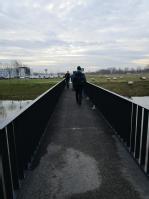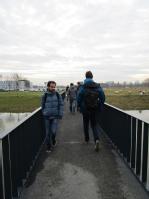Two footbridges in the Netherlands
The two footbridges were tested in collaboration with TU Delft. The first bridge is a two-span (15m + 10m) structure, whilst the second bridge is a slightly cambered single-span structure that is 14.5m long. Handrails are made of steel in the first and FRP composited in the second case. Photos of the two bridges are shown in Figure 1.
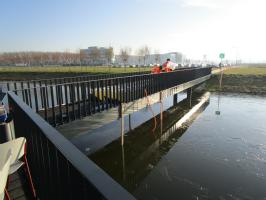 |
Figure 1 |
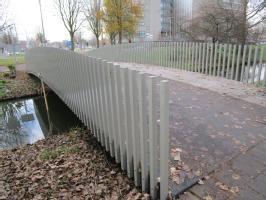 |
Modal testing
Frequency response function (FRF) based modal testing, using an instrumented impact hammer, was conducted on both structures. The testing revealed that fundamental vertical natural frequency of the two structures are 4.8Hz and 6.1Hz, respectively. They belong in the range typical of similar structures made of concrete and steel. The corresponding damping ratio for the cambered bridge was exceptionally high at 7.9%, probably due to this bridge being slightly cambered and having longitudinal restraints. The damping ratio of the first bridge was less than 1%. Five vibration modes were measured on the first and four on the second bridge, in the frequency range up to 20Hz.
As in the case of the box-girder bridge, it was found that human presence during modal testing of bridge 1 had influence on the dynamic properties of the fundamental mode, as explained in the conference paper published at IMAC XXXVI. Figure 2 shows some extracts from testing on this bridge.
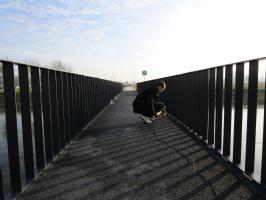 |
Figure 2 |
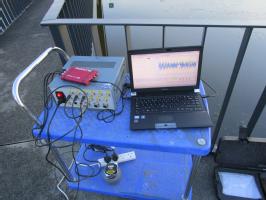 |
Response measurements
Tests involving single person walking and jumping, as well as crowds walking and jogging were performed on both structures. The acceleration response in walking tests on both bridges was up to 1.5m/s2.
Publications
- Zivanovic, S., Russell, J., Pavlovic, M., Wei, X. and Mottram, J. T. (2018) Effects of Pedestrian Excitation on Two Short-Span FRP Footbridges in Delft. IMAC-XXXVI, Orlando, Florida, 12 - 15 February.
Photo Gallery
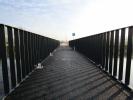 Accelerometers - bridge 1 |
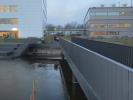 Bridge 1 |
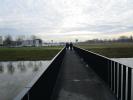 Jogging on bridge 1 |
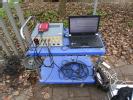 Data acquisition - bridge 2 |
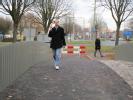 Walking on bridge 2 |
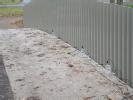 Accelerometers - bridge 2 |
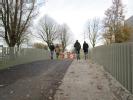 Jogging on bridge 2 |

